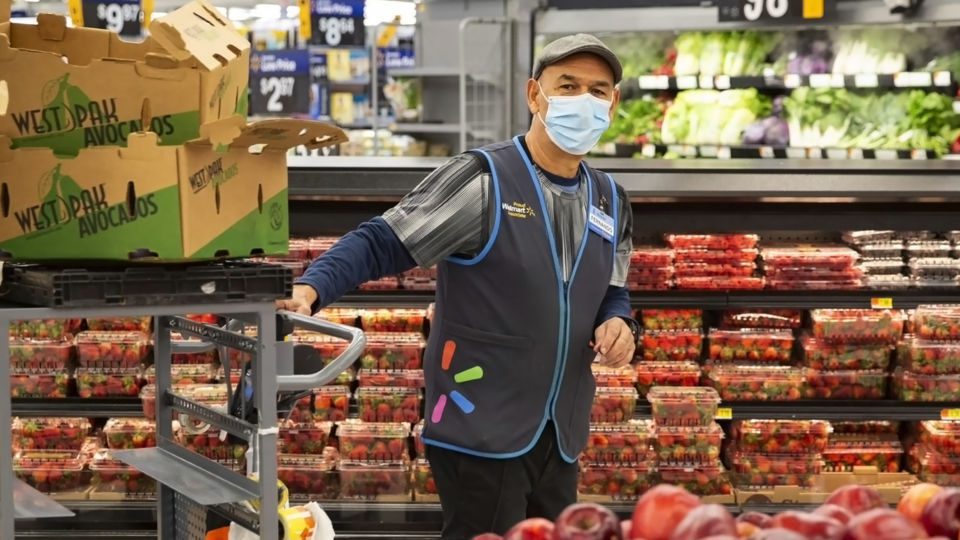Walmart’s performance during COVID-19 represents a success story, with 10% same-store sales growth and a whopping 74% e-Commerce sales increase in Q1 2020. The retail giant was already poised to benefit from current conditions, but the degree of its success offers a treasure trove of lessons about operating in a crisis.
Retail TouchPoints discussed the key elements of its strategy with Lei Duran, SVP, Knowledge Team Retail Insights at Kantar, who heads up the consultancy’s Walmart coverage. Duran, who has held leadership positions at Walmart and other companies that have worked within the retail giant’s ecosystem, credited the company’s fast, flexible distribution model as one of the cornerstones of its success. Even as shoppers quickly shifted focus from category to category, making it hard to predict demand, Walmart was able to work closely with suppliers and leverage its own expertise to keep shelves full.
“This isn’t the first time that Walmart has had to react to some type of crisis,” said Duran. “You can look back at hurricanes and other situations where you’ve seen huge spikes in demand, and it was able to weather it because that network and its relationship with its supply base can help prioritize getting things back in stock.”
Even Walmart Has Its Hiccups, With Lessons To be Learned
Walmart’s COVID-19 operations weren’t perfect: the retailer’s communications got off to a slow start when grocery order volume spiked early on and pickup windows became scarce. Shoppers found it difficult to reserve slots during the early days of the pandemic, and for the first three or four days Walmart didn’t have a response ready. However, the company quickly started delivering in-app messages telling shoppers about what was happening — an approach that can turn frustration into appreciation.
Advertisement
“Everyone has a lesson that can be learned, and I think the theme of transparency of information with your shopper is paramount,” said Duran. “Probably the bigger you are, the more red tape you have to go through to make any type of statement to the public. When Walmart did make a statement within its app to shoppers to let them know, at least in social listening that we’ve done, we saw sentiment go up. Even though you couldn’t get the delivery spot, you still felt appreciated.”
Store-level communication also is critical in times like this, according to Duran. The shape of the crisis can vary region-by-region — even town-by-town — and Walmart empowered its individual locations to serve as the face of its outreach efforts.
Put Employees At The Front Of Messaging — They’re The Face Of The Company
Other retailers also can learn from Walmart’s associate-focused marketing efforts. “I think that with an associate base that large, and the political nature of Walmart and its employees, it could be seen as a risk,” said Duran. “But in this time, when those associates are truly helping to keep people fed, keep consumables on the table and keep groceries being loaded into your car, there’s an elevated sense for the work that they’re doing. I think it puts a halo around retailers — and it’s not just Walmart, it’s retailers in general — that have them as the center focus.”
Scale And Convenience Will Set The Pace For Future Delivery Programs
Walmart is in a position to excel in the post-COVID-19 landscape as well, with the retailer rolling out an additional weapon: the unification of the Walmart.com and Walmart Grocery apps. The retailer already fields half its grocery orders through the Walmart app, and further streamlining the process will be a major play in a delivery-focused world.
“I think Walmart will do well into the near future going by the plans that they’ve already kind of laid out, to continue accelerating online grocery, pickup and delivery,” said Duran. “The consolidation of their app is a really big one that I’m watching intently at Kantar, because it will truly create a window to the entire store, and enable it to deliver and fulfill in a potentially faster manner than Amazon. Walmart is really using its scale and footprint as an advantage.”
‘Cross-Pollination’ Can Help Other Retailers Keep Up
Retailers looking to replicate Walmart’s omnichannel success shouldn’t be afraid of “cross-pollination” with tech companies, according to Duran. Larger companies may want to consider acquisitions, but smaller players can realize similar benefits through partnerships.
“By partnering with technology or last mile service or whatever you’re missing, finding those partnerships will get you that technology at a very rapid pace,” said Duran. “More and more, we’re seeing that across the industry— retailers are using partnerships as an equalizer to react in a fast and agile way.”














